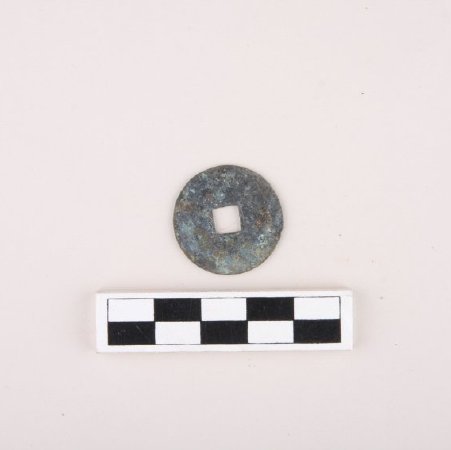Object Name:
Coin
Object ID:
13.237.078
Case:
Chinese Americans have always been caretakers at Stanford, first as railroad workers whose labor helped finance the founding of the institution, then as the university's earliest gardeners, cooks, custodians, and launderers whose efforts maintained the institution. A lack of surviving documents and racist legislation against Chinese immigrants impedes a historical understanding of Chinese American experiences. Artifacts excavated from campus lands and photographs support a fuller exploration of the publically perceived and privately enacted lives of Chinese Americans at early Stanford. These materials also highlight the dynamic exchanges between Chinese and non–Chinese lives. Chinese Americans were not the insular community stereotypically depicted in texts but a persistent, vibrant presence in the Stanford University community. All artifacts are from the Stanford University Archaeology Collections.
Group:
Bridging Experiences: Chinese coins brought by immigrants often found new functions in America and were reused as gambling pieces, decorations, and healing tools.
Object:
Copper alloy Chinese coin (tongbao or wen). Stanford Mansion site (Object ID 13.237.078).
Material(s):
Metal
Place of origin:
North America; California; Santa Clara County; Stanford Mansion
Provenance:
Mixed artifacts excavated from the site of the Stanford's Palo Alto mansion.
Collection:
Archaeology – Stanford Mansion

